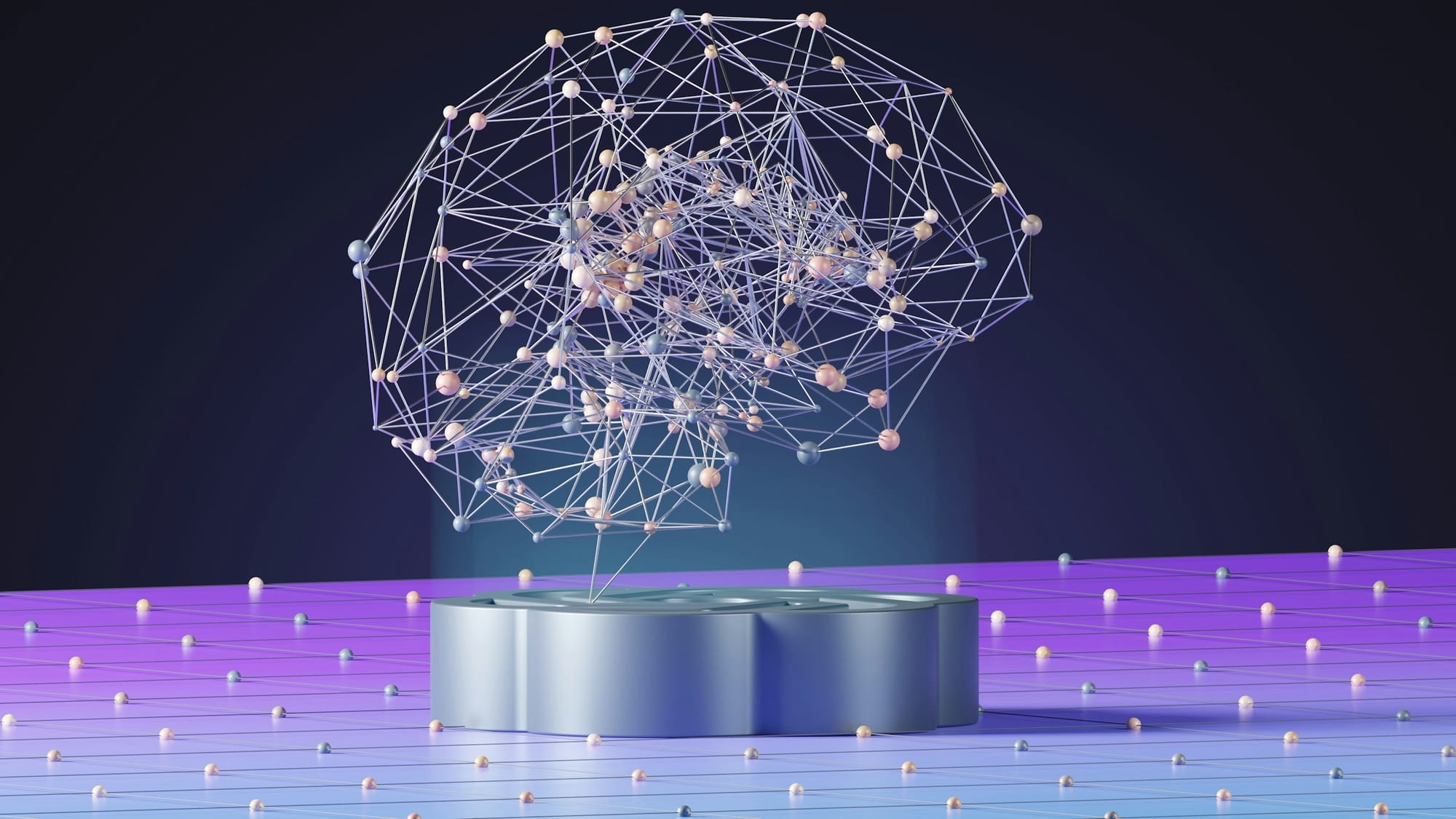As LLM technology matures, businesses are figuring out how to use LLM agents to improve their operations and enhance their products. Customers, too, are benefiting from this technology. For example, you might be looking for a way to streamline your operations when you suddenly receive a notification that your LLM agent has completed a complex task that you thought would take a human on your team several hours to do. With the rise of Multi-Agent AI, multiple LLM agents can now collaborate, delegate tasks among themselves, and tackle even more intricate workflows, further increasing efficiency and automation.
This is precisely the kind of scenario LLM agents help create. In this guide, we’ll explore what LLM agents can do, how they work, and how you can integrate them into your operations to enhance efficiency and help your business make better decisions. Lamatic’s AI tech stack can help you achieve your goals with LLM agents, enabling more intelligent automation and more efficient workflows. Our solution is easy to use and will help you get up and running quickly to generate measurable results in no time.
What Is an LLM Agent and How Does It Work?

LLM agents are advanced AI systems designed to create complex text requiring sequential reasoning. They can think ahead, remember past conversations, and use different tools to adjust their responses based on the situation and style needed. Consider a question in the legal field that sounds like this: "What are the potential legal outcomes of a specific type of contract breach in California?" A basic LLM with a retrieval-augmented generation (RAG) system can easily fetch information from legal databases.
Consider a more detailed scenario: "In light of new data privacy laws, what are the common legal challenges companies face, and how have courts addressed these issues?" This question digs deeper than just looking up facts. It's about understanding new rules, how they affect different companies, and finding out what courts have said about it all. A simple RAG system can pull up relevant laws and cases but cannot connect these laws to actual business situations or analyze court decisions in depth.
When the project demands sequential reasoning, planning, and memory, LLM agents come into play in such situations. For this question, the agent can break down its tasks into subtasks. The first subtask may be accessing legal databases to retrieve the latest laws and regulations. Secondly, it can establish a historical baseline of how similar issues were previously handled. Another subtask can be summarizing legal documents and forecasting future trends based on observed patterns. To complete these subtasks, the LLM agent requires a structured plan, a reliable memory to track progress, and access to necessary tools. These components form the backbone of an LLM agent’s workflow.
The Workings of LLM Agents
LLM agent components LLM agents generally consist of four components:
- Agent/brain
- Planning
- Memory
- Tool use
Agent/Brain
An LLM agent's core is a language model (or an action model) that processes and understands language based on a vast amount of data it's been trained on. When you use an LLM agent, you start by giving it a specific prompt. This prompt is crucial it guides the agent on how to respond, what tools to use, and the goals it should aim to achieve during the interaction. It's like giving directions to a navigator before a journey.
Additionally, you can customize the agent with a specific persona. This means setting up the agent with certain characteristics and expertise better suited for particular tasks or interactions. It's about tuning the agent to perform tasks in a way that feels right for the situation.
Essentially, the core of an LLM agent combines advanced processing abilities with customizable features to effectively handle and adapt to various tasks and interactions.
Memory
The memory of LLM agents helps them handle complex LLM tasks with a record of what’s been done before. There are two main memory types:
Short-term Memory
This is like the agent’s notepad, which quickly writes down essential details during a conversation. It keeps track of the ongoing discussion, helping the model respond relevantly to the immediate context. However, this memory is temporary, clearing out once the task is completed.
Long-term Memory
Think of this as the agent’s diary, storing insights and information from past interactions over weeks or months. This isn't just about holding data; it's about understanding patterns, learning from previous tasks, and recalling this information to make better decisions in future interactions.
By blending these two types of memory, the model can keep up with current conversations and tap into a rich history of interactions. This means it can offer more tailored responses and remember user preferences over time, making each conversation feel more connected and relevant. In essence, the agent is building an understanding that helps it serve you better in each interaction.
Planning
Through planning, LLM agents can reason, break down complicated tasks into smaller, more manageable parts, and develop specific plans for each part. As tasks evolve, agents can also reflect on and adjust their plans, ensuring they stay relevant to real-world situations. This adaptability is key to completing assignments. Planning typically involves two main stages: plan formulation and plan reflection.
Plan Formulation
During this stage, agents break down an enormous task into smaller sub-tasks. Task decomposition approaches suggest creating a detailed plan and following it step by step. Others, like the chain of thought (CoT) method, recommend a more adaptive strategy where agents tackle sub-tasks individually, allowing for greater flexibility. Tree of thought (ToT) is another approach that takes the CoT technique further by exploring different paths to solve a problem. It breaks the problem into several steps, generating multiple ideas at each step and arranging them like branches on a tree.
Some methods use a hierarchical approach or structure plans like a decision tree, considering all possible options before finalizing a plan. While LLM-based agents are generally knowledgeable, they sometimes struggle with tasks that require specialized knowledge. Integrating these agents with domain-specific planners has proven to improve their performance.
Plan Reflection
After creating a plan, agents need to review and assess its effectiveness. LLM-based agents use internal feedback mechanisms, drawing on existing models to refine their strategies. They also interact with humans to adjust their plans based on human feedback and preferences. Agents can also gather insights from their environments, both real and virtual, using outcomes and observations to refine their plans further.
Two effective methods for incorporating feedback in planning are ReAct and Reflexion. React, for instance, helps an LLM solve complex tasks by cycling through a sequence of thought, action, and observation, repeating these steps as needed. It takes in feedback from the environment, including observations and input from humans or other models. This method allows the LLM to adjust its approach based on real-time feedback, enhancing its ability to answer questions more effectively.
Tools Use
Tools in this term are various resources that help LLM agents connect with external environments to perform specific tasks. These tasks include extracting database information, querying, coding, and performing anything else the agent needs. When an LLM agent uses these tools, it follows specific workflows to carry out tasks, gather observations, or collect the information required to complete subtasks and fulfill user requests.
Here are examples of how different systems integrate these tools (Modular reasoning, knowledge, and language). This system uses expert modules, ranging from neural networks to simple tools like calculators or weather APIs. The main LLM acts as a router, directing queries to the appropriate expert module based on the task. An LLM was trained to use a calculator for arithmetic problems in one test. The study found that while the LLM could handle direct math queries, it struggled with word problems that required extracting numbers and operations from text. This highlights the importance of knowing when and how to use external tools effectively.
Related Reading
- What is Agentic AI
- How to Integrate AI Into an App
- Generative AI Tech Stack
- Application Integration Framework
- Mobile App Development Frameworks
- How to Build an AI app
- How to Build an AI Agent
- Crewai vs Autogen
- Types of AI Agents
What is the Architecture of LLM Agents?

An LLM agent is an advanced AI system that can perform tasks traditionally requiring human intelligence. LLM agents can understand and generate text, answer questions, summarize information, write and debug code, and more. In many scenarios, they can take on the role of a subject matter expert. The architecture of LLM Agents is based on the LLM Agent structure and additional required elements to enable functionality and operations.
LLMs: The Brains Behind LLM Agents
At the heart of an LLM agent is an LLM, like GPT-3 or GPT-4. These models are based on a neural network architecture called a Transformer, which can process and generate human-like text. The core model is trained on vast datasets to understand language patterns, context, and semantics. Depending on the application, the LLM Agent can be fine-tuned with additional training on a specific and specialized dataset.
Integration Layers: The Connectivity of LLM Agents
LLM agents often include an integration layer that allows them to interact with other systems, databases, or APIs. This enables agents to retrieve information from external sources or perform actions in a digital environment.
Input and Output Processing: The Data Management of LLM Agents
LLM agents may incorporate additional preprocessing and postprocessing steps, such as language translation, sentiment analysis, or other forms of data interpretation, which enhance the agents’ understanding and responses.
Ethical and Safety Layers: The Safeguards of LLM Agents
Given the potential for misuse or errors, many LLM agents are equipped with layers designed to filter out inappropriate content, prevent the propagation of misinformation, and ensure ethically aligned responses.
User Interfaces: The Communication Channels of LLM Agents
LLM agents include an interface for communicating with users to enable human interaction. The user interface can vary widely, from text-based interfaces (like chatbots) to voice-activated systems or even integration into robotic systems for physical interaction.
What Are Multi-Agent LLMs?
Multi-agent LLM systems are frameworks where multiple LLM agents interact with each other or work in collaboration to achieve complex tasks or goals. This extends the capabilities of individual LLM Agents by leveraging their collective strengths and specialized expertise of multiple models. By communicating, collaborating, sharing information and insights, and allocating tasks, multi-agent LLM systems can solve problems flexibly and at scale more effectively than a single agent. For example, multi-agent LLMs can be used for:
Complex Problem Solving
Leveraging multiple agents for analysis, decision-making, strategic planning, simulations, or research.
Learning Environments
Leveraging multiple agents for multiple subjects and learning styles.
Customer Services
Leveraging multiple agents to handle various technological, business, personal, etc. inquiries.
When managing multi-agent LLM systems, it’s essential to implement orchestration mechanisms to ensure coordination, consistency, and reliability among agents.
LLM Agent Frameworks: A Few Notable Examples
Let’s take a look at some notable LLM agents and frameworks:
Langchain
A framework for developing LLM-powered applications that simplifies the LLM application lifecycle.
- CSV Agent
- JSON Agent
- OpenAPI Agent
- Pandas Dataframe Agent
- Python Agent
- SQL Database Agent
- Vector store Agent
Llama Index
A data framework that simplifies the creation of LLM applications with data connectors and structuring, advanced retrieval interface, and integration capabilities.
Llama Hub
Community-driven library for data loaders, readers, and tools.
Haystack
An end-to-end NLP framework that enables you to build NLP applications.
- Haystack Agent
- SearchEngine
- TopPSampler
Embedchain
A framework to create ChatGPT-like bots for your dataset.
- JS Repo
MindSearch
A new AI search engine framework that works similarly to Perplexity.ai Pro. You can set it up as your search engine using proprietary LLMs like GPT and Claude or open-source models like InternLM2.5-7b-chat. It's built to browse hundreds of web pages to answer any question, providing detailed responses and showing how it found those answers.
AgentQ
It helps create autonomous web agents to plan, adapt, and self-correct. It integrates guided Monte Carlo tree search (MCTS), AI self-critique, and RLHF using the direct preference optimization (DPO) algorithm.
Nvidia NIM agent blueprints
An agent for enterprise developers who need to build and deploy customized GenAI applications.
Bee agent framework
An open-source framework by IBM for building, deploying, and serving large agentic workflows at scale. IBM’s goal with Bee is to empower developers to adopt the latest open-source and proprietary models with minimal changes to their current agent implementation.
Related Reading
- Llamaindex vs Langchain
- LangChain vs LangSmith
- Langsmith Alternatives
- LangChain vs RAG
- Crewai vs Langchain
- AutoGPT vs AutoGen
- GPT vs LLM
- AI Development Tools
- Rapid Application Development Tools
Key Capabilities and Use Cases of LLM Agents

Understanding the Unique Strengths of LLM Agents
LLM agents possess various capabilities that make them powerful tools for processing and generating human language. Their key capabilities include:
Natural Language Understanding (NLU)
Understanding human language in written form. They can interpret text from various sources, discerning the meaning and context.
Natural Language Generation (NLG)
Generating coherent, contextually relevant, and often creative text.
Contextual Awareness
Maintaining the context of a conversation or a document. They remember previous inputs and can reference them in subsequent interactions.
Multilingual Support
Understanding and generating text in various languages, facilitating translation and localization tasks.
Personalization
Tailoring responses based on the user’s communication style, preferences, or past interactions.
Information Retrieval and Summarization
Sifting through large volumes of text to find relevant information and summarize it concisely.
Sentiment Analysis and Emotion Detection
Gauging the sentiment or emotional tone of the conversation.
Tool Utilization
Leveraging tools like search engines, API, calculators, and others to gather information and take action.
Reasoning and Logic
Making logical connections and solving problems based on reasoning like chain-of-thought or tree-of-thought.
Content Generation
Generating content for specific purposes, like marketing or emails, or code, or creative content, like poetry or stories.
Ethical and Safe Responses
Filtering out inappropriate content and providing ethically aligned and safe responses remains an ongoing development and concern area.
Integrations
Working with other AI systems, IoT, APIs, and others for compounded and advanced capabilities.
Practical Applications of LLM Agents Across Industries
Thanks to their capabilities, LLM Agents can be applied across diverse applications. For example:
Customer Service and Support
Providing customer support, handling inquiries, resolving issues, and offering information 24/7.
Content Creation and Copywriting
Generating creative content, such as articles, blogs, scripts, and advertising copy.
Language Translation and Localization
Translation services for various content types, aiding in bridging language barriers and localizing content for different regions.
Education and Tutoring
Functioning as personalized tutors, providing explanations, answering questions, and assisting with learning materials in various subjects.
Programming and Code Generation
Writing, reviewing, and debugging code speeds up the development process and helps people learn programming languages.
Research and Data Analysis
Sifting through large volumes of text, summarizing information, and extracting relevant data are invaluable for research and analysis.
Healthcare Assistants
However, they don't replace professional medical advice. They offer support in patient interaction, medical documentation, and even assistive tools for diagnosis and treatment planning.
Personal Assistants
Managing schedules, setting reminders, answering questions, and even helping with email management and other administrative tasks.
Legal and Compliance Assistance
Assisting in legal research, document review, and drafting legal documents (without replacing professional legal advice).
Accessibility Tools
Enhancing accessibility through tools like voice-to-text conversion, reading assistance, and simplifying complex text.
Interactive Entertainment
Dynamic narratives, character dialogue, and responsive storytelling elements are created in gaming and interactive storytelling.
Marketing and Customer Insights
Analyzing customer feedback, conducting sentiment analysis, and generating marketing content, providing valuable insights into consumer behavior.
Social Media Management
Managing social media content, from generating posts to analyzing trends and engaging with audiences.
Human Resources Management
Aiding in resume screening, answering employee queries, and training and development activities.
Related Reading
- Best No Code App Builders
- LLM vs Generative AI
- Langchain Alternatives
- Autogen vs Langchain
- Langflow vs Flowise
- SLM vs LLM
- Langgraph vs Langchain
- Haystack vs Langchain
- Semantic Kernel vs Langchain
- UiPath Competitors
- Agentic Definition
- AI Developers
- Best AI Models
- Best AI Coding Assistant
- LangChain Agent
- Best AI Code Generator
- AI Developer Tools
Start Building GenAI Apps for Free Today with Our Managed Generative AI Tech Stack
The rise of large language models has created an explosion of chaos. Businesses require different applications and tools to make sense of the chaos and meet their unique needs. Lamatic offers a managed generative AI tech stack that helps organizations sift through the noise and accelerate their implementation of LLM agents.
Our solution provides managed GenAI middleware, a custom GenAI API, a low code agent builder, automated GenAI workflow CI/CD, DevOps (DevOps for GenAI), edge deployment via Cloudflare workers, and an integrated vector database (Weaviate). With Lamatic, teams can rapidly implement GenAI solutions without accruing tech debt. Our platform automates workflows and ensures production-grade deployment on edge, enabling fast, efficient GenAI integration for products needing swift AI capabilities. Start building GenAI applications for free today with our managed generative AI tech stack.





